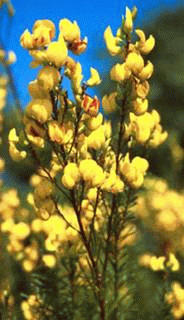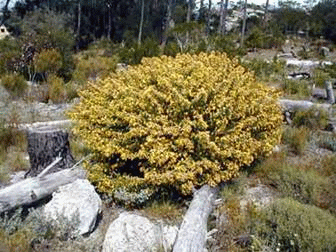|
|||||
|
|||||||
|




An initiative of :

|
| Food-Info.net> Questions and Answers > Food Products > Tea What is Honeybush tea?Honeybush tea is obtained from the leaves of the South African honeybush shrub (Cyclopia intermedia and related Cyclopia species), which is totally unrelated to the normal tea plant (Camellia sinensis ) The leaves, stems and flowers of the Cyclopia species are used to manufacture a sweet herbal infusion.   International interest in honeybush is traced back to the tea trade of the Dutch and the British. A settlement, which eventually became Cape Town, was established in 1652 as a supply base for the Dutch East India Company that was trading in Indian tea and Southeast Asian spices. Botanists began cataloguing the rich flora of the cape soon after; the honeybush plant was noted in botanical literature by 1705. Though there are no published reports at that time of its use as a tea by the native populations (the San and Khoi-Khoi tribes, known today as KhoiSan or Bushmen), it was soon recognized by the colonists as a suitable substitute for ordinary tea, probably based on observing native practices. Most of the honeybush tea is still collected from wild populations, but cultivation has become necessary with the rapid growth of the industry (forcing collectors to travel further into poorly accessible areas) and with the demand for more uniform product. Production of honeybush tea is similar to normal and rooibos tea. The plant is harvested, dried and oxidised (‘fermented'). For the oxidizing step two typical methods are used; oxidizing in a curing heap or at elevated temperatures in a preheated "baking-oven". Contrary to normal tea oxidation, the process takes a much longer time. The traditional method of honeybush tea ‘fermentation' is the use of curing heap, especially when large quantities of tea are produced. A round oval shaped heap of approximately four to five meters in diameter and two meters high requires 1.5 – 2.5 ton of green honeybush material. The heap is packed firmly and left for three days to allow spontaneous heat generation and fermentation. Temperature build-up is quick since the heap is already warm when the final material is packed into heap. During the fermentation period, the material changes from green to dark-brown and develops a sweet aroma. From the third day onwards the heap is turned every twelve hours to ensure that outer, cooler regions, are mixed with the rest of the material and to prevent oxygen depletion in the heap. The heap is therefore inspected after three to five days of fermentation, depending on the species used. If a sweet, honey-like aroma is present and the material has a dark-brown colour, the heap is spread open in a thin layer on canvas and allowed to dry in the sun. The use of a preheated oven gives a product of better and more consistent quality since better control over the temperature of the fermentation process is possible and shorter fermentation periods (24-36 h) are needed to obtain fully fermented tea, either to inhibit mould growth. After this step the product is dried and packed. Honeybush tea is normally consumed with milk and sugar, but to appreciate the delicate sweet taste and flavour, no milk or sugar should be added. Descriptions of the flavour vary from that of hot apricot jam, floral, honey-like and dried fruit mix with the overall impression of sweetness. The tea has the added advantage that the cold infusion can also be used as iced tea and that it blends well with fruit juices. The traditional use of the tea for treating cough may be explained, in part, by its content of pinitol, a modified sugar (a methyl group replaces hydrogen in one position of glucose; see image below). Pinitol, named for its major source, pine trees, is also found in the leaves of several other plants is also of interest for apparent blood-sugar lowering effects, as demonstrated in laboratory animal studies and is being considered as a drug for diabetes.
Honeybush also contains anti-oxidants such as, flavones, isoflavones, coumestans, luteolin, 4-hydroxycinnamic acid, polyphenols, and xanthones. The isoflavones and coumestans are classified as phytoestrogens, used in the treatment of menopausal symptoms, an application for which honeybush has recently been promoted. The flavones and isoflavones of honeybush are similar to those in soy beans, another leguminous plant, also used in treatment of menopausal symptoms. Luteolin is the primary yellow pigment of the flowers and has been used historically as a dye.
Sources:
|
|
| ||
| Food-Info.net is an initiative of Stichting Food-Info, The Netherlands | ||||||